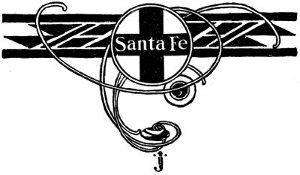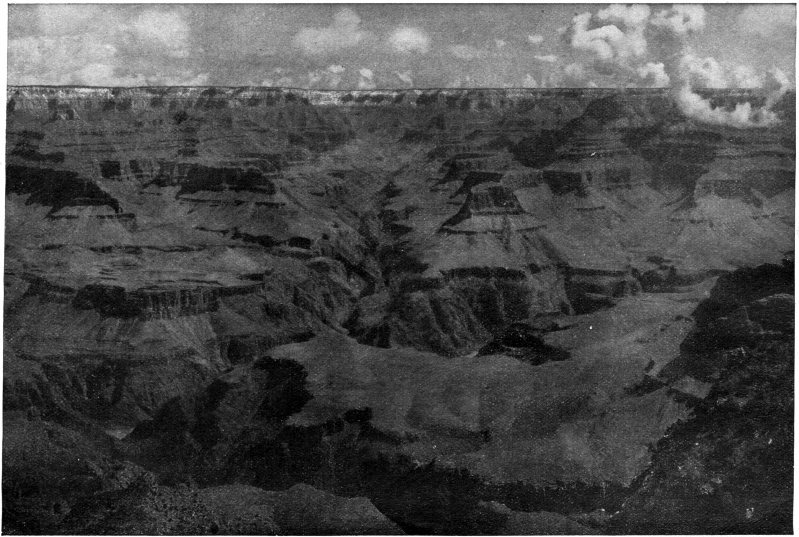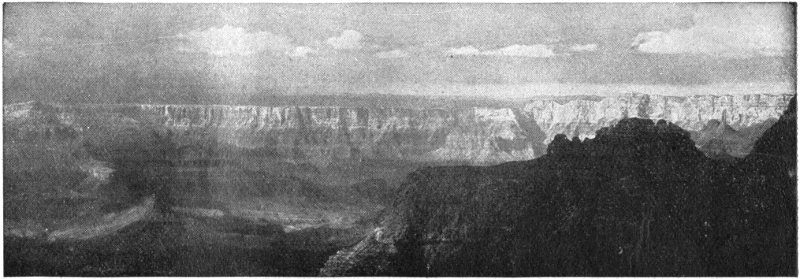
Titan of Chasms
The Grand Canyon of Arizona
THE TITAN OF CHASMS
By C. A. HIGGINS
THE SCIENTIFIC EXPLORER
By J. W. POWELL
THE GREATEST THING IN THE WORLD
By CHAS. F. LUMMIS

Fortieth Thousand
PASSENGER DEPARTMENT
THE SANTA FE
CHICAGO, 1903.

Copyright, 1899, by H. G. Peabody.Bright Angel Creek and North Wall of the Canyon.

THE TITAN OF CHASMS
BY C. A. HIGGINS
Its History
The Colorado is one of the great rivers of North America. Formed inSouthern Utah by the confluence of the Green and Grand, it intersects thenorthwestern corner of Arizona, and, becoming the eastern boundary ofNevada and California, flows southward until it reaches tidewater in the Gulfof California, Mexico. It drains a territory of 300,000 square miles, and,traced back to the rise of its principal source, is 2,000 miles long. At twopoints, Needles and Yuma on the California boundary, it is crossed by a railroad.Elsewhere its course lies far from Caucasian settlements and far fromthe routes of common travel, in the heart of a vast region fenced on the onehand by arid plains or deep forests and on the other by formidable mountains.
The early Spanish explorers first reported it to the civilized world in 1540,two separate expeditions becoming acquainted with the river for a comparativelyshort distance above its mouth, and another, journeying from the MokiPueblos northwestward across the desert, obtaining the first view of the BigCanyon, failing in every effort to descend the canyon wall, and spying theriver only from afar.
Again, in 1776, a Spanish priest traveling southward through Utah struckoff from the Virgin River to the southeast and found a practicable crossing ata point that still bears the name “Vado de los Padres.”
For more than eighty years thereafter the Big Canyon remained unvisitedexcept by the Indian, the Mormon herdsman, and the trapper, although theSitgreaves expedition of 1851, journeying westward, struck the river about150 miles above Yuma, and Lieutenant Whipple in 1854 made a survey for apracticable railroad route along the thirty-fifth parallel, where the Santa FePacific has since been constructed.
The establishment of military posts in New Mexico and Utah having madedesirable the use of a waterway for the cheap transportation of supplies, in1857 the War Department dispatched an expedition in charge of LieutenantIves to explore the Colorado